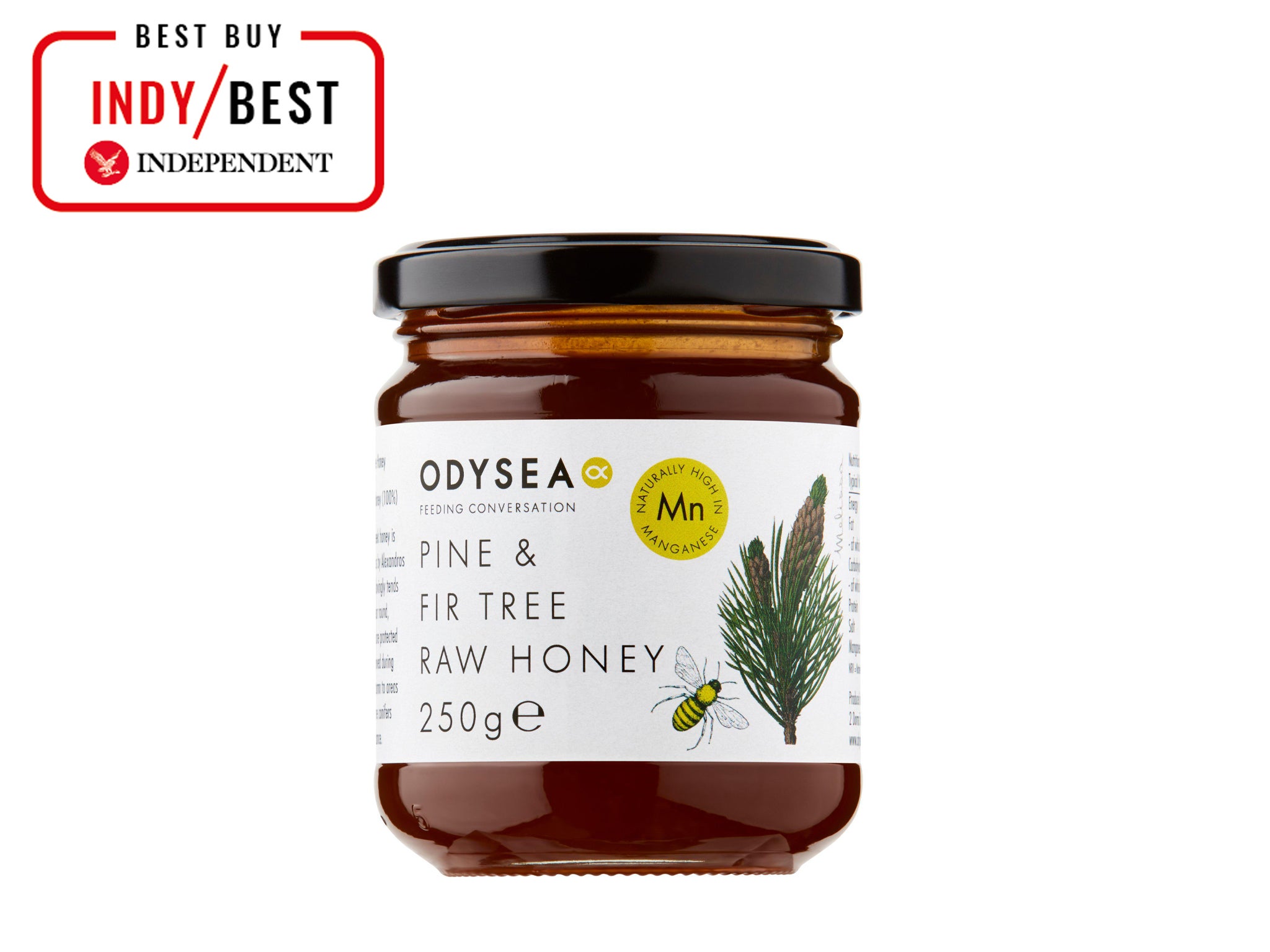
The Independent's journalism is supported by our readers. When you purchase through links on our site, we may earn commission. Why trust us?
10 best honeys to drizzle over your toast and porridge
How does manuka fare against regular varieties? We put a range of blends to the test

With so many different varieties of honey out there, it’s hard to know where to begin when picking up a new jar, especially after worrying reports of supermarket honey adulterated by cheap sugar syrup surfaced last year.
To make things a little easier, we’ve taste tested a range of honey, including everything from dark, rich forest honey to milder floral blends, including creamy set honey and gooey runny stuff that’s perfect for pouring.
A brilliantly versatile ingredient, honey has long been a store cupboard essential. Whether it’s slathered on toast, drizzled over yogurt or porridge, used for baking in place of sugar, stirred into your morning coffee, mixed into a salad dressing or dolloped on cheese, honey is a hit of sweetness you can indulge in every day.
It’s been part of human life for thousands of years, first collected by the ancient Egyptians, who would use honey to sweeten their food – not to mention embalm their dead – and was also favoured by the Greeks for its perceived healing powers.
Manuka honey is still valued for its antibiotic qualities, but we’re now more likely to use honey to pep up a dish than give us the secret of everlasting life.
Read more:
All of the honey featured is available nationwide through online delivery and we’ve included a range of price points, from cheaper everyday options to something a bit more special with showstopper appeal.
You can trust our independent reviews. We may earn commission from some of the retailers, but we never allow this to influence selections, which are formed from real-world testing and expert advice. This revenue helps to fund journalism across The Independent.
Odysea Greek pine and fir tree raw honey, 250g

The true taste of the Mediterranian, Odysea’s honey is a potent, extremely well-priced offering. The tang of pine is powerful and instant, slowly mellowing out but always offering a distinct character. Produced by beekeeper Alexandros Gousiaris, who is based in the village of Ilias, there’s a hearty toffee punch to this dark, treacly honey. If you’re after something simple and light, then we suggest you go elsewhere – the strong flavour could overpower bakes and cakes – but for a memorable taste and heaps of personality, then this is the honey to buy.
Fortnum & Mason acacia chunk honeycomb, 980g
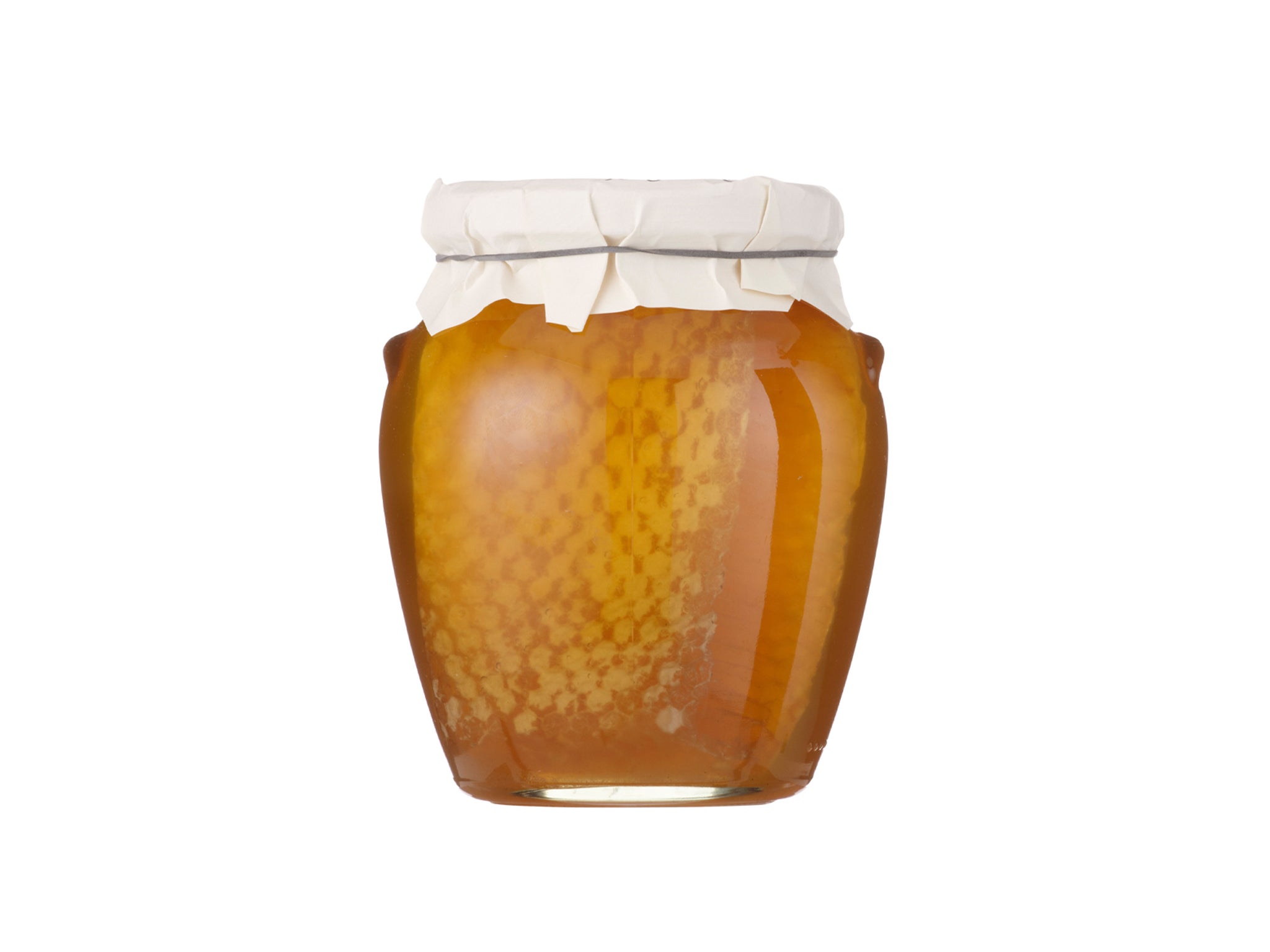
At a whopping 2lb, this golden honey is the heaviest and most impressive of all the jars we tested. Its size makes the high price a touch more bearable, as does the hefty hunk of pure honeycomb inside, which is totally edible – but possibly a little waxy for most. Made by bees foraging on Hungarian acacia trees and Spanish orange blossom, it’s a delicate, light-tasting honey and there’s plenty of floral flavour packed in there, too. Thought too lavish for everyday use, it’s lovely looking and would make an excellent gift.
Raw Artisan Honey organic raw forest honey, 220g
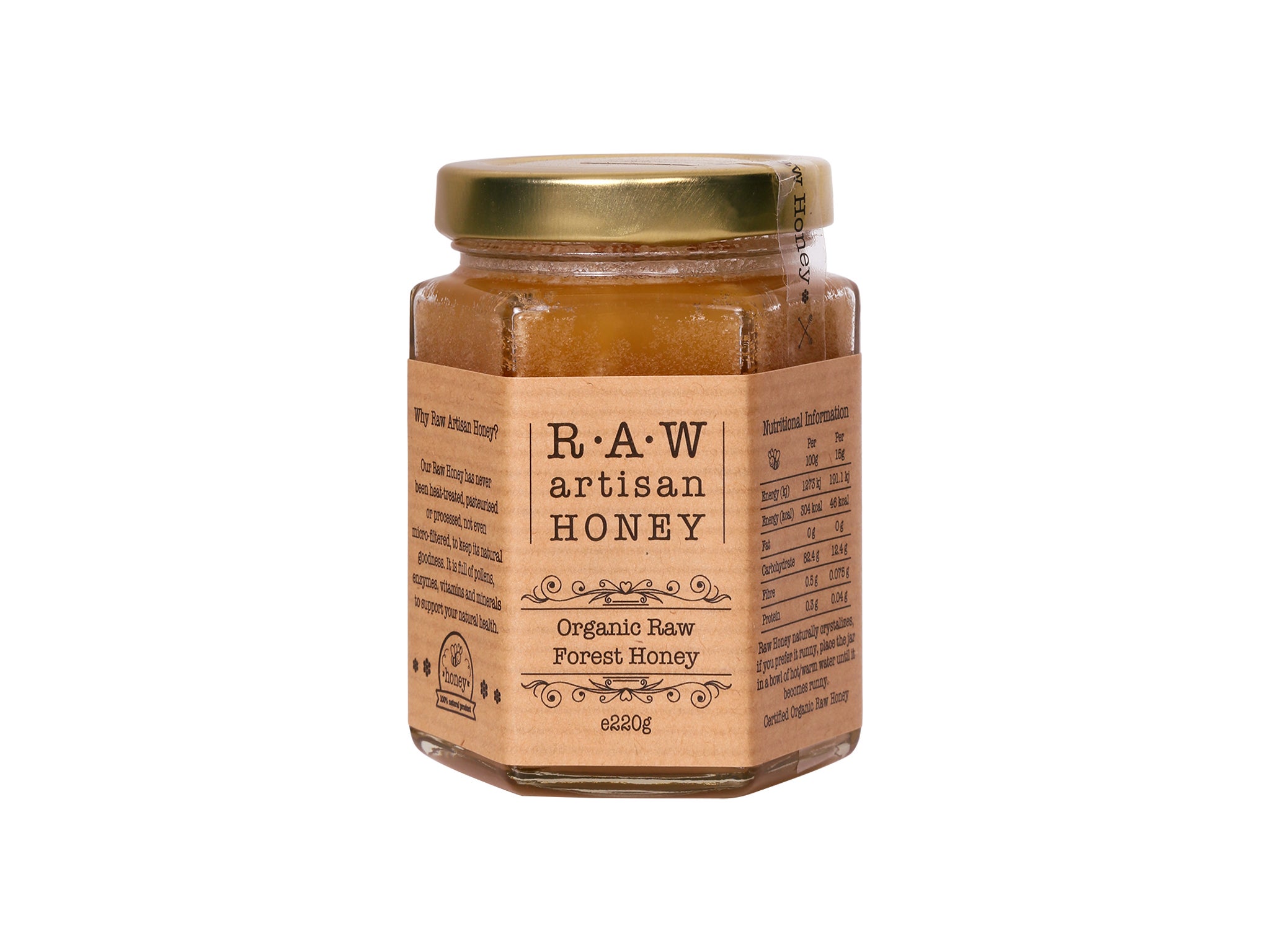
A soft set, amber-coloured honey, there’s a decidedly woodsy taste to this complex honey, which has been harvested from the Baltic Sea adjacent fields and forests of western Lithuania. Here the bees are binging on everything from fir and pine to maple, oak, willow and hazel, as well as heather, sweet clover and wild raspberry plants. As such, there’s an instant depth of flavour and a richness that make it much more than just an easy sweetener.
Hilltop blossom honey, 340g
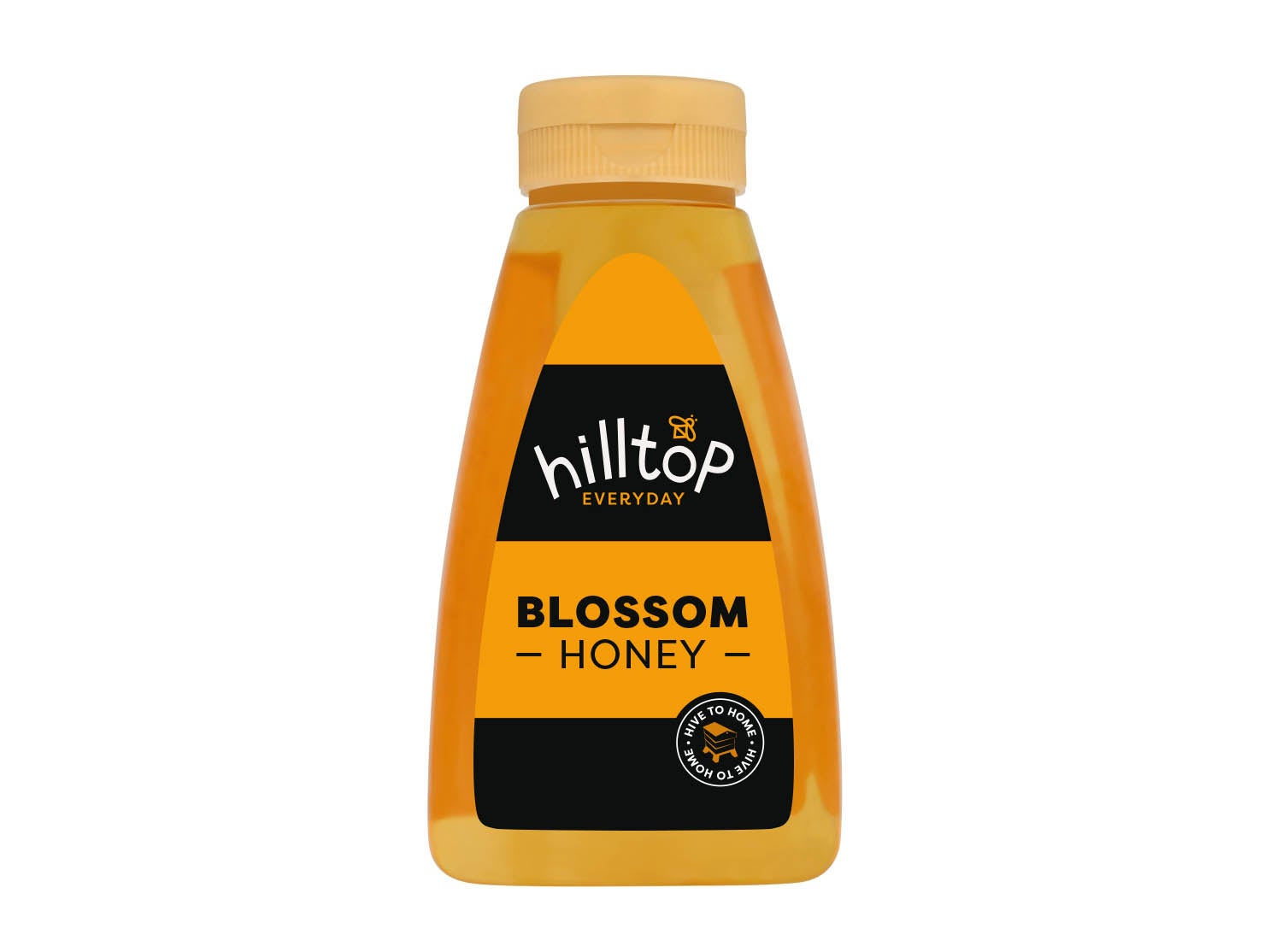
Available in a squeezy plastic bottle for optimum drizzling, Welsh brand Hilltop’s best-seller is a traditional and fancy-free runny honey. A clear, medium gold colour, it’s got more heft of flavour to it than some lighter honeys. A blend of EU and non EU honeys, it might not have the pedigree of more expensive brands, but for something on the lower end of the price scale, it’s a great go-to for everyday use and using in bulk, including meat marinades and swirling into hot drinks.
Opso at home thyme honey, 212g
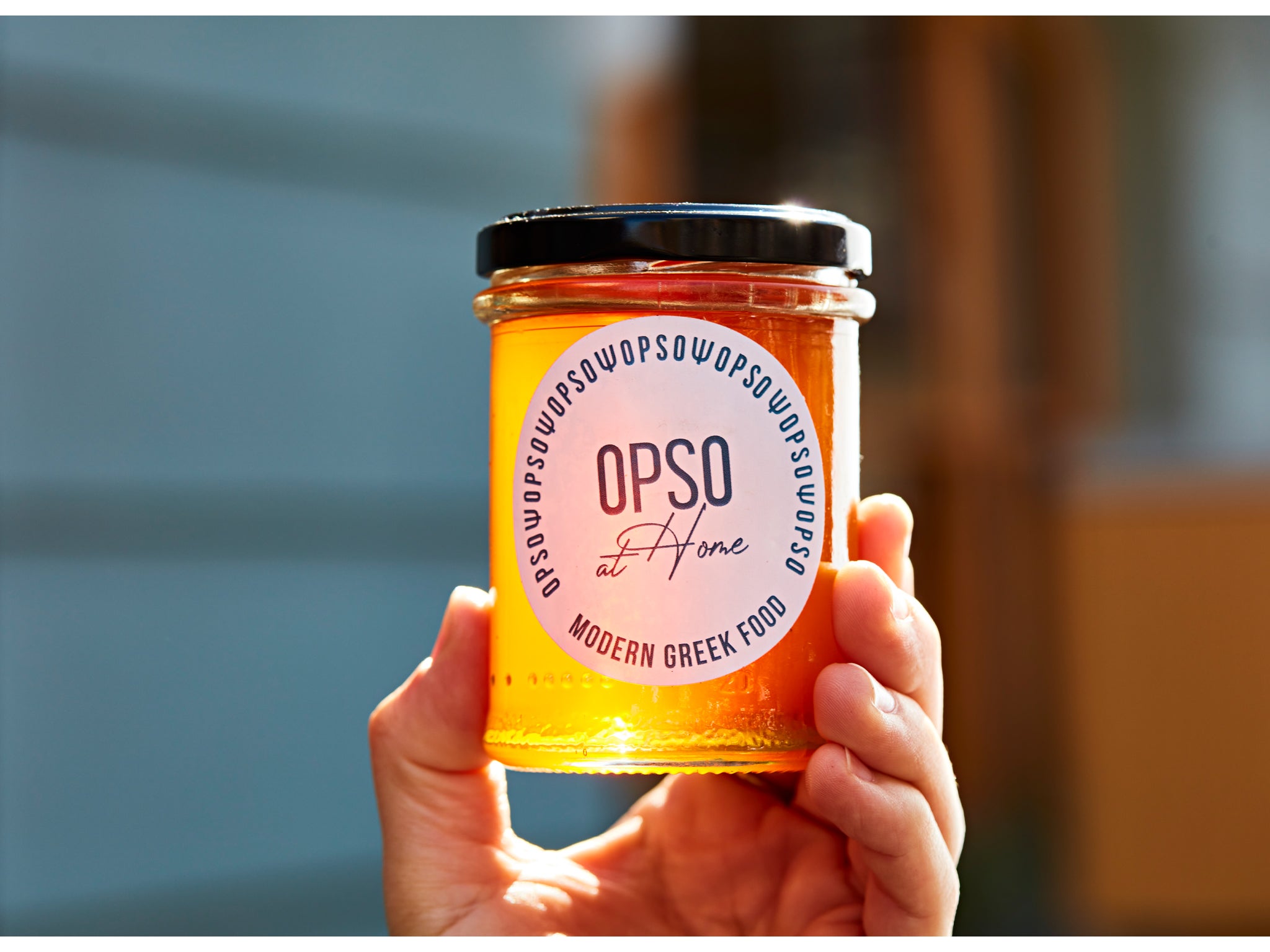
Modern Greek restaurant Opso has launched its own line of Opso at Home products in the wake of lockdown, including an elegant, thick-set runny honey. Available for collection from tis Marylebone location – sadly it’s not nationwide just yet – this single origin product is derived from Cretan thyme, and packs a refined herbal punch, placing it right between the floral and forest honeys when it comes to character.
Black Bee Honey British spring honey, 227g
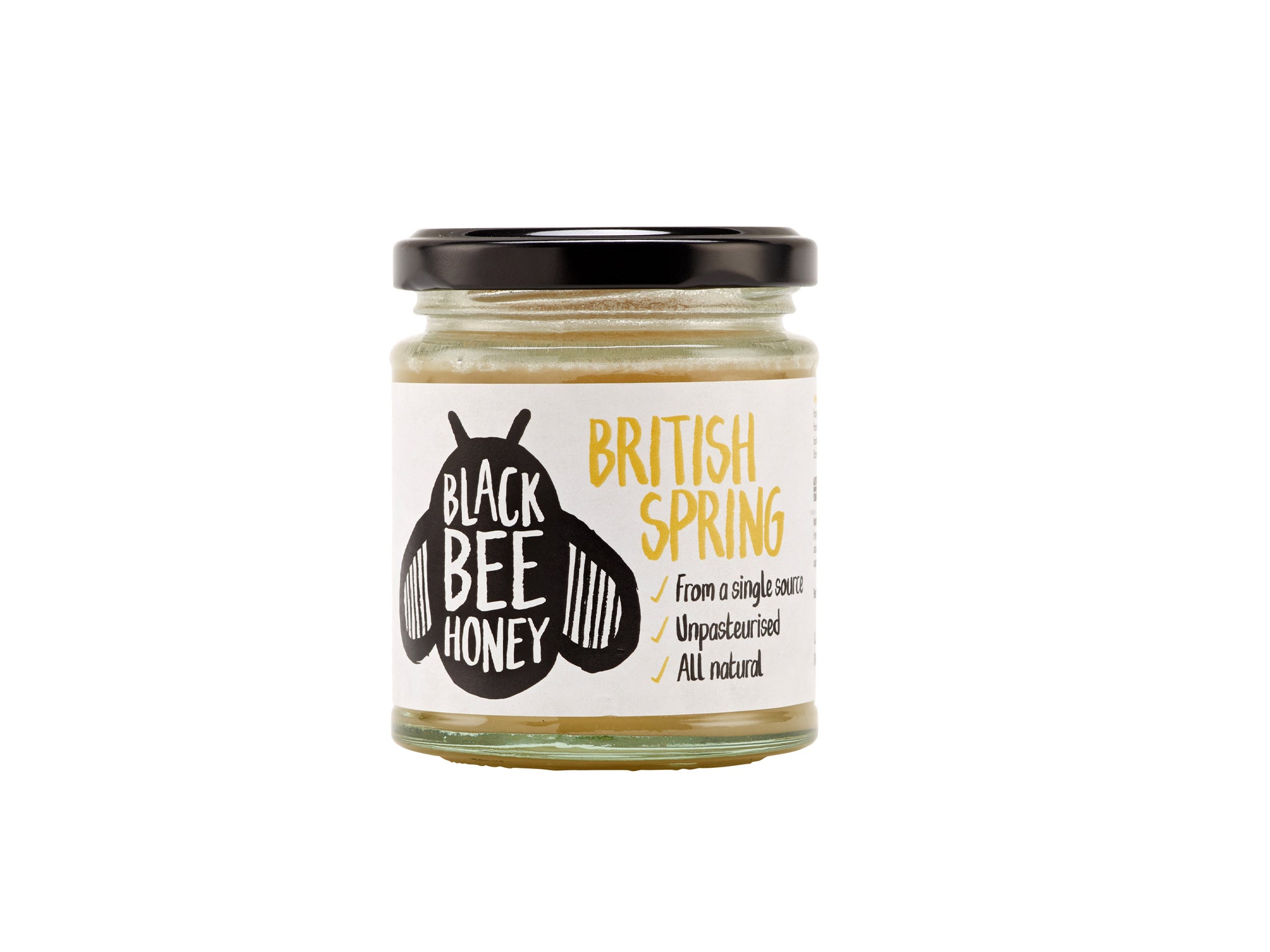
Part of Black Bee Honey’s seasonal range – winter, autumn and summer are also available from the proudly British brand – the spring variety is a super-sweet and easily spreadable. Light in colour and creamy in texture, it’s foraged from Somerset rapeseed, hawthorn and plum blossom, making it a fully homegrown hero. The name of the beekeeper is even printed on the jar – Pete from Exmoor – offering a personal touch that gives this honey a story as well as a distinctive fresh taste.
Equal Exchange organic raw clear honey, 500g
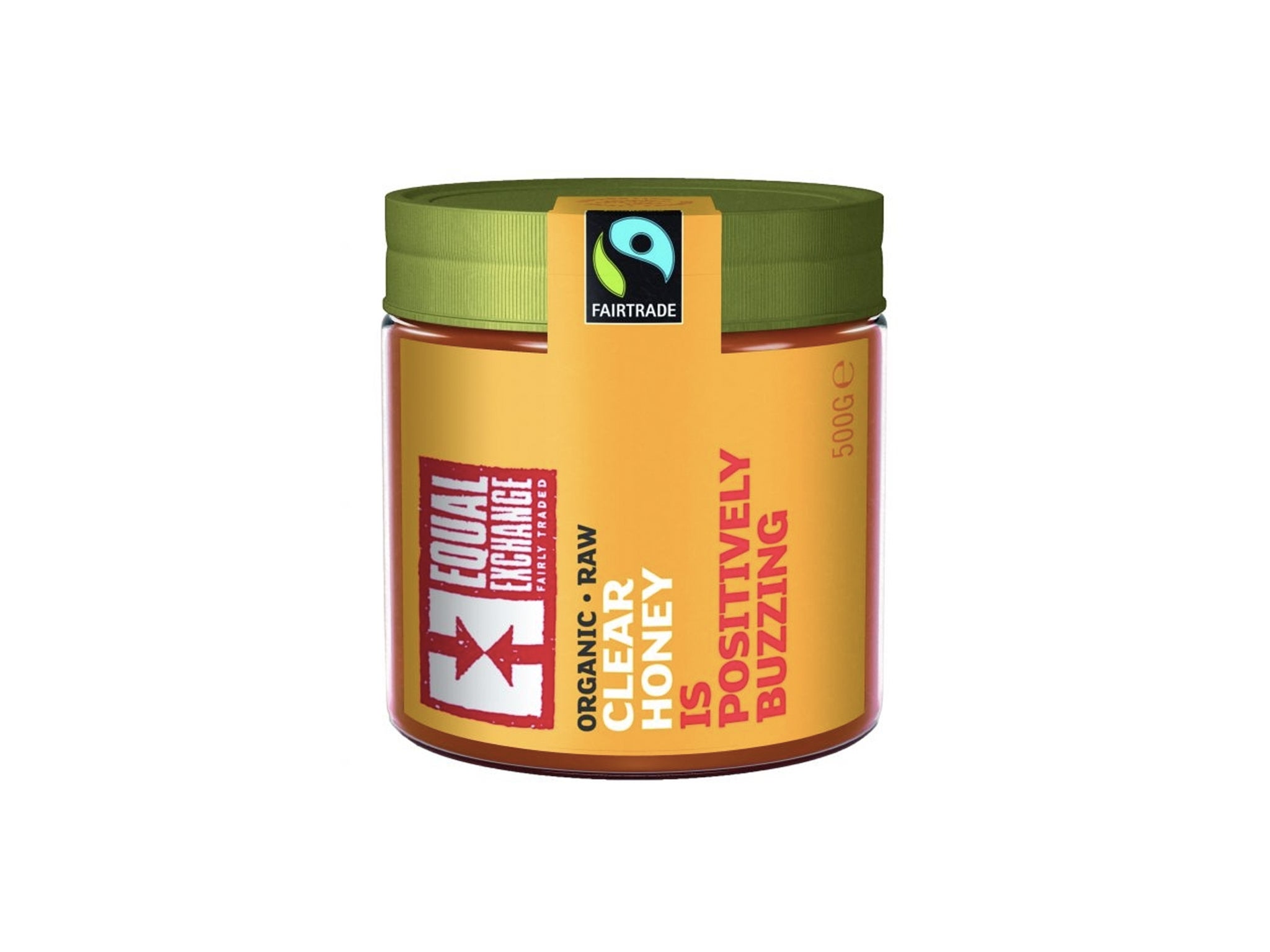
If ethics are the top of your list when food shopping, then Equal Exchange’s super runny clear honey is well worth checking out. A certified Fair Trade product made in collaboration with a selection of small farmer co-ops in Mexico and Nicaragua – Miel Mexicana, Mieles de Sur and Tzetlal – this fragrant, tropical honey is just sweet enough. Its fresh flavour is decidedly drizzle-worthy, but it’s real stand out quality is the fact that with every jar you’re directly supporting small businesses on the other side of the world.
Egmont Honey manuka honey MGO 40+, 250g
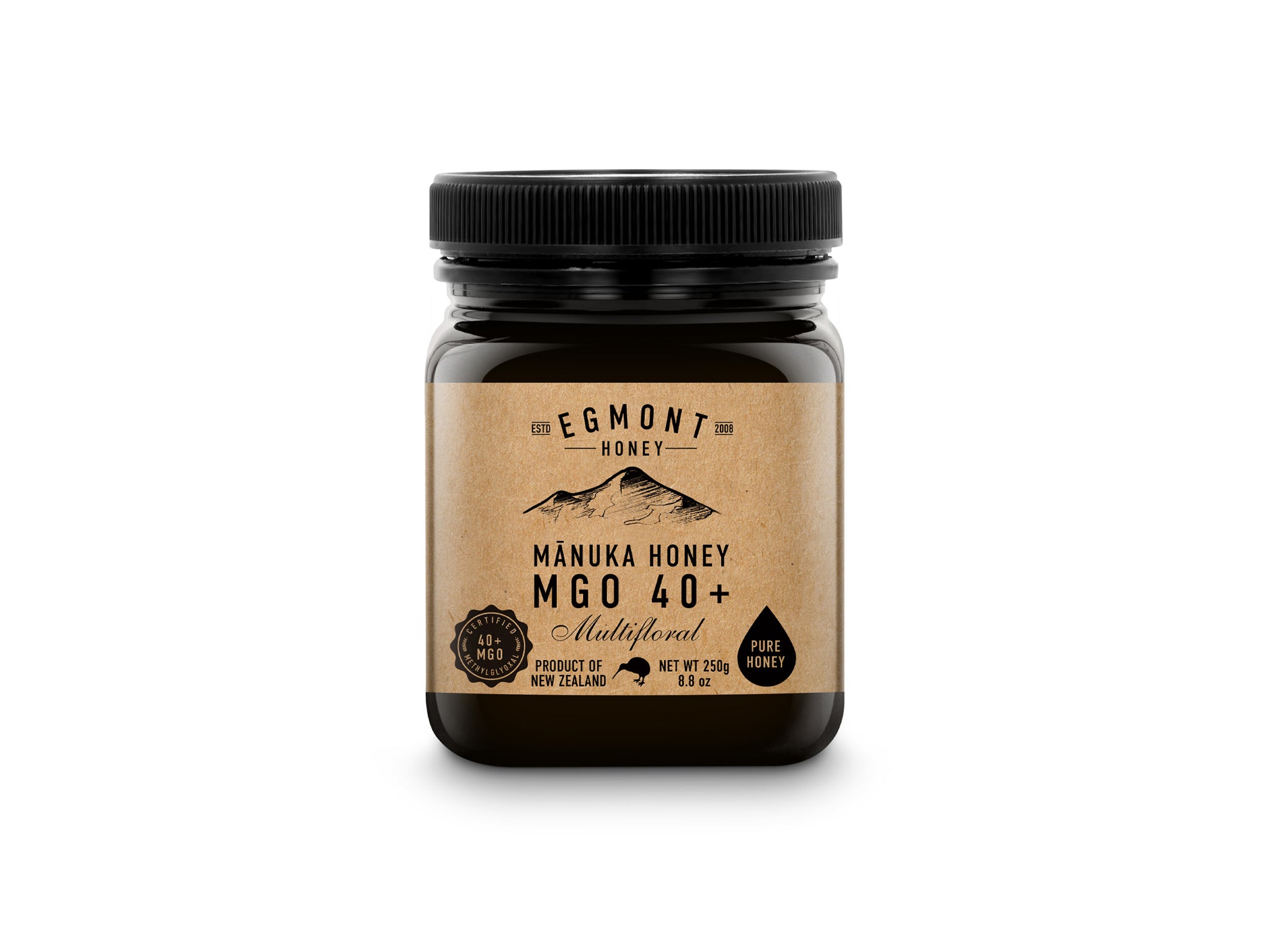
Manuka honey can be a pricey thing, and at £23, Egmont’s tub is actually on the cheaper end of the spectrum. Harvested in New Zealand from the manuka tree, this monofloral honey – in which the bees feast on a single source – is renowned for its healing properties, used for centuries by indigenous people to assist wellness thanks to of naturally occuring Methylglyoxal (MGO), which has antibacterial and antimicrobial properties. As such, there’s a slightly tart, medicinal taste to this honey. To get the best out of it, it’s recommended to simply lick it from a spoon rather than incorporate it into cooking.
Melrose and Morgan English wildflower honey, 227g
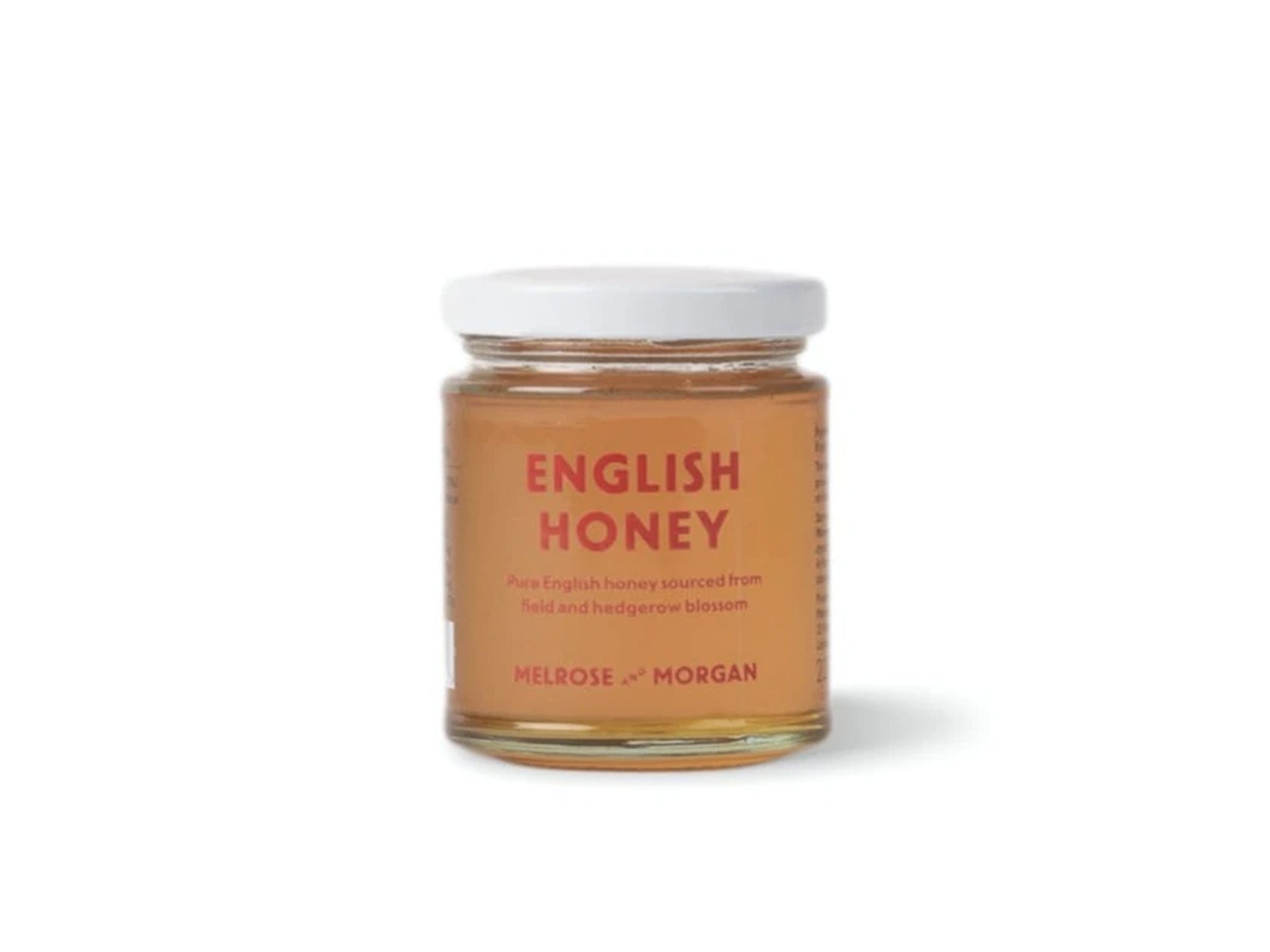
In its sleek, sparse packaging, Melrose and Morgan’s English honey certainly looks the part. Made by bees foraging across fields and hedgerow blossoms, this wildflower honey can be traced back to Yorkshire broad bean flowers and white clover. With a crisp flavour, it’s a solid breakfast table staple. Our batch was prone to crystallisation, but we can’t be the only ones who rather enjoy that unintentional crunch.
Groovy Food Company creamy set honey, 340g
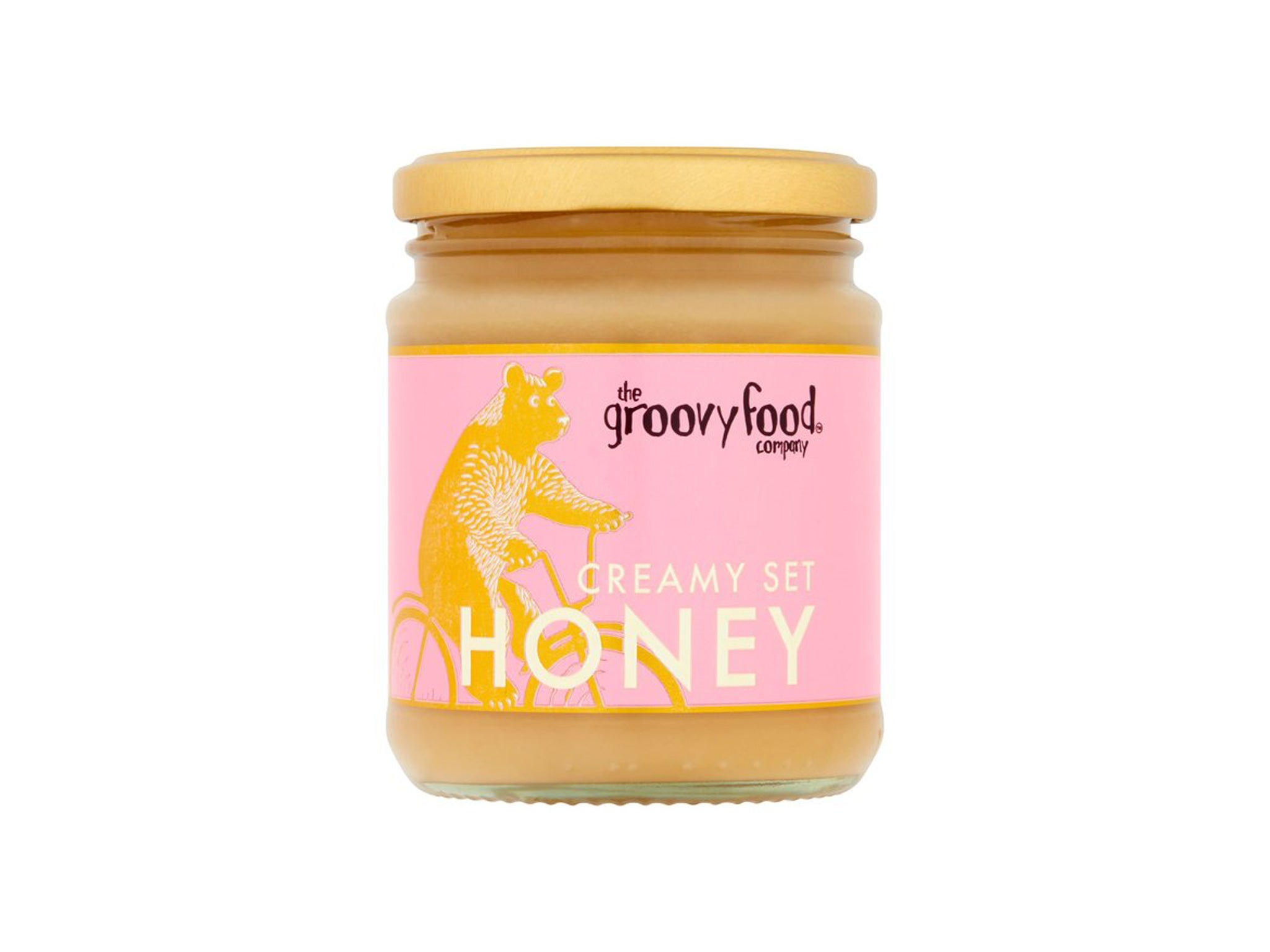
With a low price point – but no word on where the honey is from, save for the somewhat mysterious words “blend of non EU honeys” written on the jar – Groovy Food’s set honey is thick and velvety, churned to produce its solid, not unpleasantly gritty texture. If provenance isn’t an issue and you’re simply after a reasonably priced, uncomplicated honey, then this is one you’ll want to spread on your toast and stir into your puds.
Raw Vibrant Living organic tropical forest honey, 350g
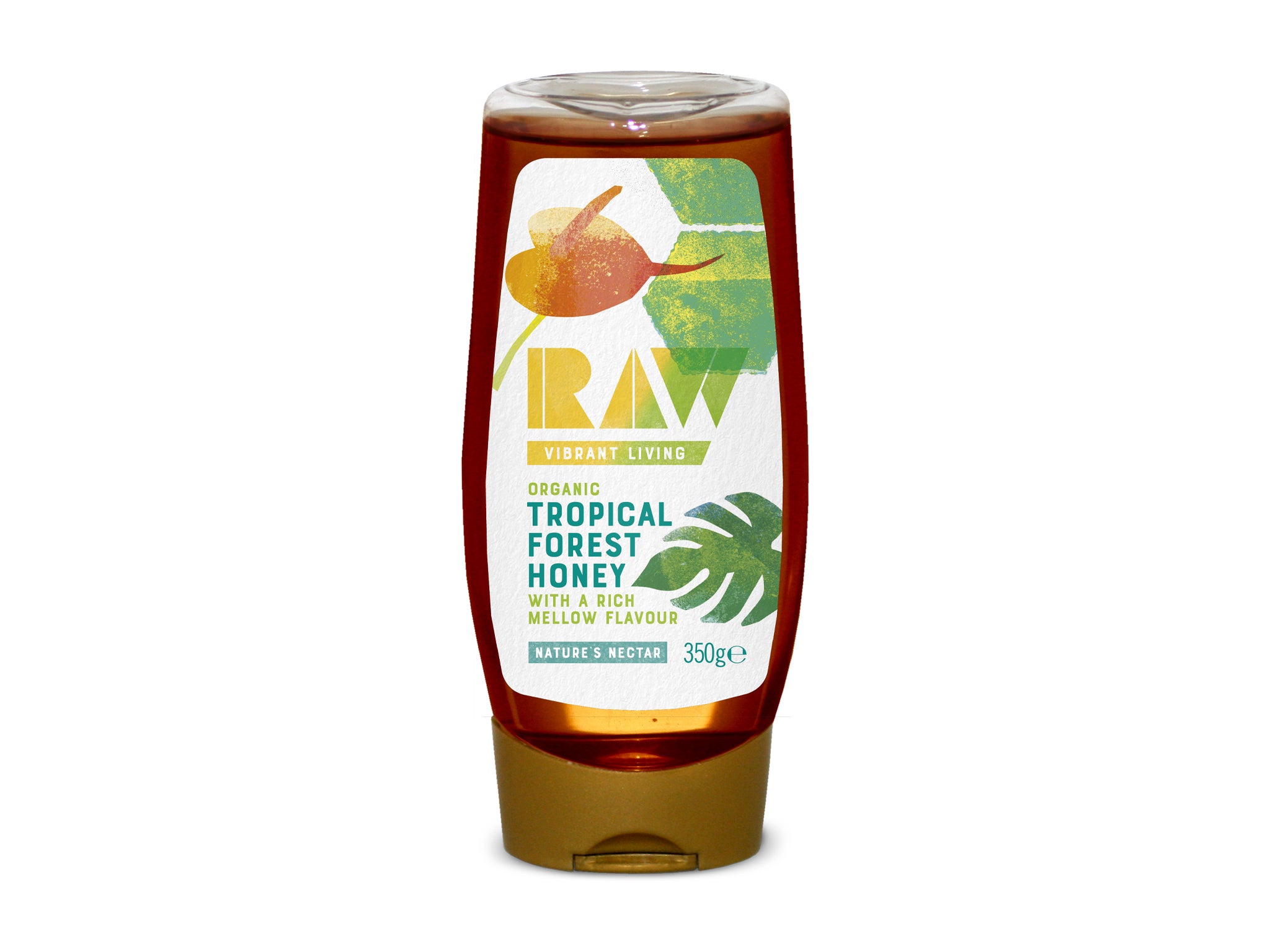
Fruity and bold, this Brazilian derived forest honey has a distinct, almost tangy flavour. It comes in a squeezy bottle, so there’ll be no need to scoop around in the bottom of a jar to get to the dregs of this glossy runny honey. Forest honey is also slightly lower in sugar content than other honeys, meaning it’ll never crystalise. Pair with a strong, hard cheese for a sophisticated after-dinner offering.
The verdict: Honey
If you’re looking for a powerful, punchy and unique tasting honey, then Odysea’s excellently priced Odysea Freek pine and fir tree raw honey is a full-bodied game-changer. For something lighter that won’t overwhelm any other flavours in the mix, we’re buzzing about Black Bee’s soft set Black Bee Honey British spring honey.
From plastic-free tea to vegan cookbooks, check out IndyBest’s best food and drink buys of 2020